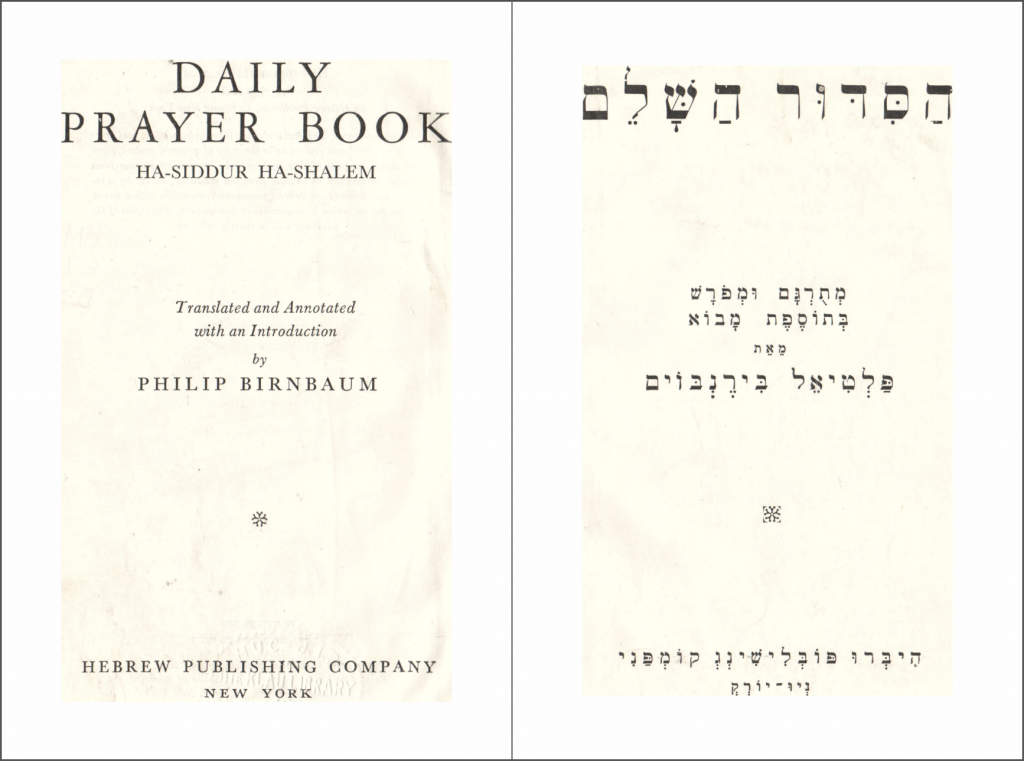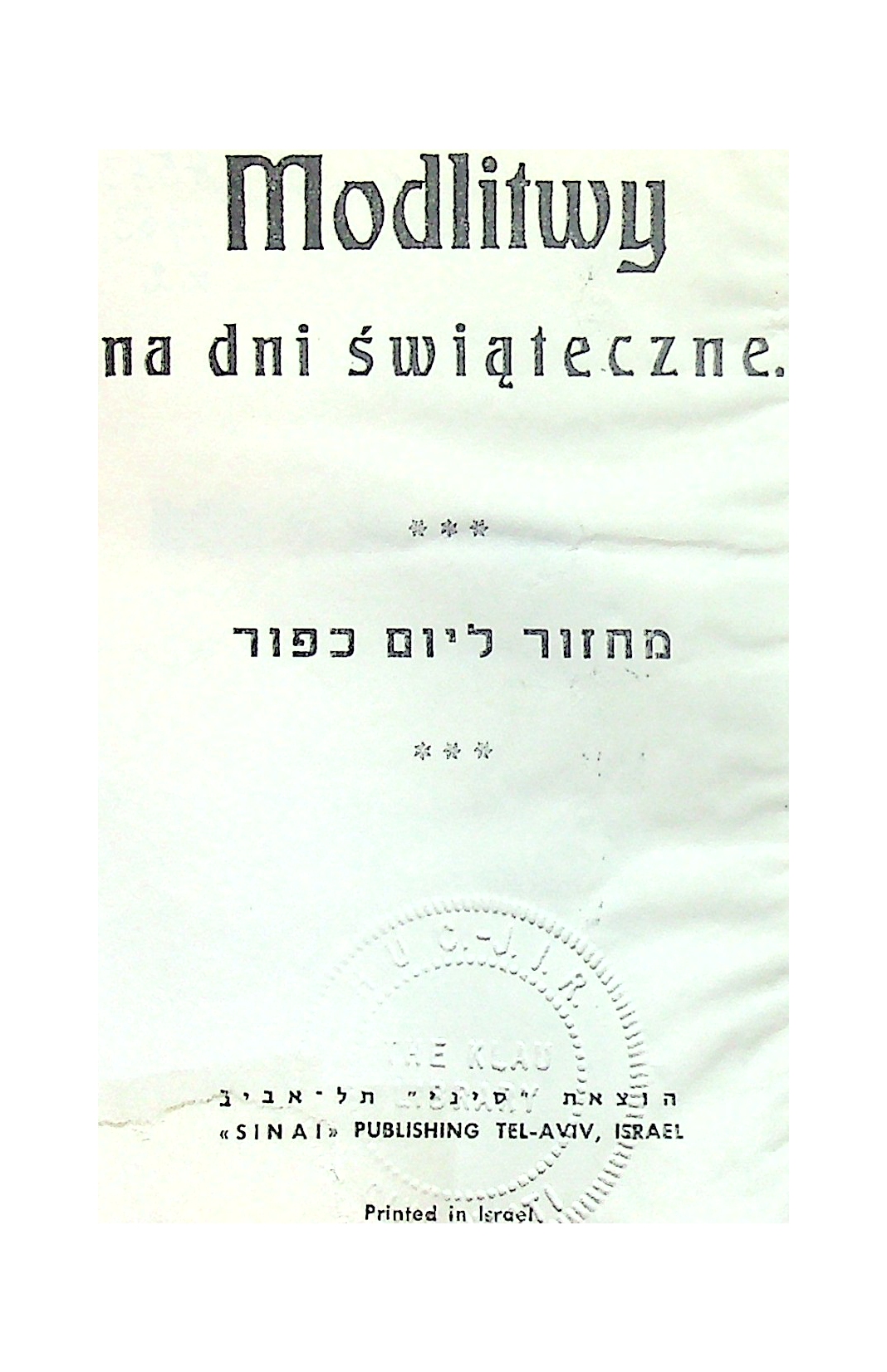
Compiled and translated by Paltiel (Philip) Birnbaum, the bilingual Hebrew-English Maḥzor haShalem l’Yom Kippur (“Sephardic-Ḥasidic,” 1958) was part of a two volume set of mahzorim Paltiel arranged following the publication of his Ashkenaz mahzor for Rosh ha-Shanah and Yom Kippur in 1951 (also published by the Hebrew Publishing Co.).
“Sephardic” here does not refer to the liturgical custom of the Sepharadim, but rather to the liturgical custom of the ḥasidim who followed the school of Lurianic Kabbalah (a/k/a the nusaḥ ha-ARI z”l). Non-ḥasidic Jews referred to this “new” liturgical custom as “Sephardic” as it contained some liturgical customs familiar to some branches of the sepharadi diaspora. The term stuck and has been a familiar source of confusion for newcomers to Jewish prayer ever since.
This work is in the Public Domain due to the lack of a copyright renewal by the copyright holder listed in the copyright notice (a condition required for works published in the United States between January 1st 1924 and January 1st 1964).
This work was scanned by Aharon Varady for the Open Siddur Project from a volume held in the collection of the Varady family, Cincinnati, Ohio. (Thank you!) This work is cross-posted to the Internet Archive, as a repository for our transcription efforts.
Scanning this work (making digital images of each page) is the first step in a more comprehensive project of transcribing each prayer and associating it with its translation. You are invited to participate in this collaborative transcription effort!

“📖 מַחֲזוֹר הַשָּׁלֵם לְיוֹם כִּפּוּר (נוסח האר״י) | Maḥzor haShalem l’Yom Kippur, translated and arranged by Paltiel Birnbaum (1958)” is shared through the Open Siddur Project with a Creative Commons Public Domain Dedication 1.0 Universal license.

![Maḥzor haShalem l-Rosh haShanah - Nusaḥ "Sfard" [Ḥassidic] (Paltiel Birnbaum 1958) - title page](https://opensiddur.org/wp-content/uploads/2019/08/title-birnbaum-rh-sefard-mahzor-1958.png)








Leave a Reply